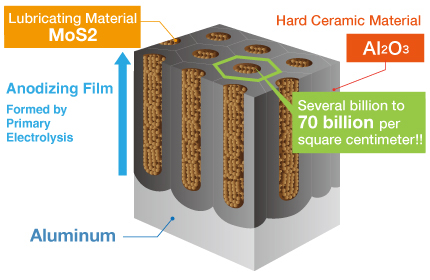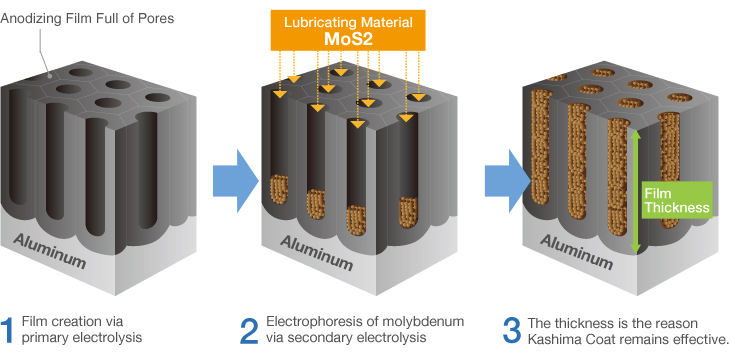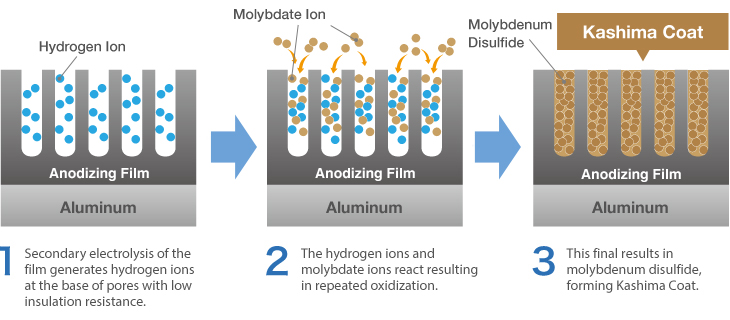

possibility of the one and only.
A hard anodizing film that is only hard is problematic in practice as scoring and seizing will occur with a combination of high contact surface pressure and micro vibrations and/or friction.
We wondered…what if lubricating the hard anodizing film solved the problem?
The surface treatment Kashima Coat was developed from this very idea.
Kashima Coat is lubricated anodizing developed by Miyaki Corporation by adding a lubricating function to hard anodizing with the goal of enhancing wear resistance.
The repetition of “hard + lubricant” shown in the diagram produces up to 70 billion molecules per square centimeter that significantly improves the wear resistance of Kashima Coat in comparison to hard anodizing.

Kashima Coat is created by filling the countless regularly aligned pores of the anodizing(anodic oxide) film generated via primary electrolysis with the lubricating material molybdenum disulfide.

Molybdenum disulfide is a solid material with lubricating properties.
Molybdenum is widely used in engine lubricants and grease for construction machinery.
Conventional methods of lubricating anodizing consisted of the application or baking of materials with a particle diameter no smaller than 0.3㎡ like Teflon, graphite, molybdenum disulfide, and tungsten disulfide with an organic binder. The particle diameter was too large to permit depositing in anodizing’s micropores.
However, Kashima Coat miniaturizes molybdenum disulfide to create ammonium tetrathiomolybdate which is then subject to secondary electrolysis, enabling the deposition of molybdenum that fills the pores up to the film thickness.
